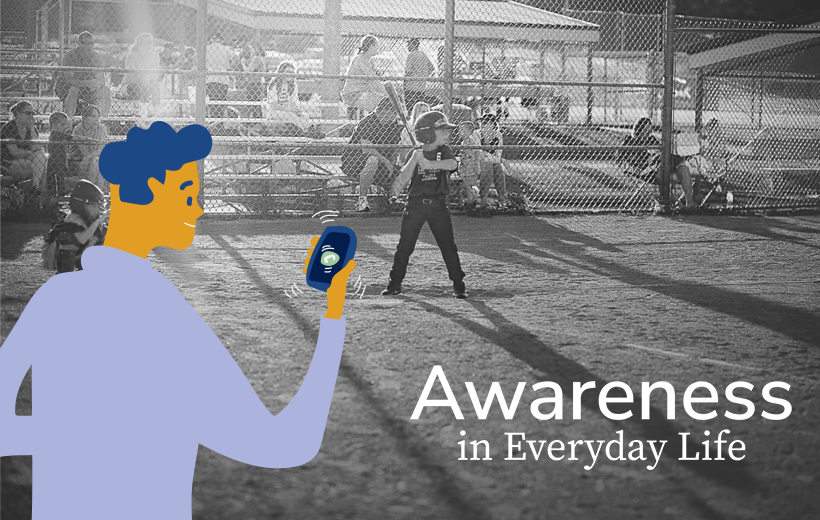Yeshe: The Knowing That Is Present from the Very Beginning
By Cortland Dahl • 3 min read
By Cortland Dahl • 3 min read

This article follows on from the Prajna: Sharpening the Sword to Cut Through Delusion? article.
IN THE BUDDHIST TRADITION, a sword is often seen as a symbolic representation of prajna, the wisdom that is acquired and cuts through confusion. What happens when we cut through that delusion? We uncover jnana, or yeshe as it is referred to in Tibetan.
The form of wisdom referred to as yeshe or jnana is not something you acquire. If you look at the etymology of the Tibetan word, “ye” is short for “ye nay.” “Ye” means beginning, and “nay” suggests a contraction “yenay shepa.” It essentially means “knowing that is present from the very beginning”— this wisdom has always been with you.
This form of wisdom is not something you gain through hearing teachings from your teacher, sharpening it through contemplation, or increasing it through meditation. It is the open space of experience that is always here. The only thing that happens with this form of wisdom is that we either recognize its presence, or we don’t. We are either in touch with it, or we’re not.
If this sounds like rigpa or nature of mind, that’s because it is. This is synonymous with all the many terms we use to describe the true nature of things. Terms like the dharmakaya, buddha nature, pure awareness, suchness, and so on.
In practical terms, this distinction can be very helpful. When we hear certain teachings, we can ask ourselves, “Is this something I’m going to improve through practice, something I’m going to develop and refine through study and meditation?” If so, we’re talking about prajna — acquired wisdom. But if the language points to something that’s already here, then we’re talking about yeshe — innate wisdom. Just knowing this distinction can help us avoid misunderstandings.
“Yeshe, on the other hand, is like stepping into an entirely new world. This is not the familiar terrain of learning, improving, and progressing. There’s nothing to “figure out” when it comes to yeshe. It is who we are, not something we can do, gain, or cultivate.”
— Cortland Dahl
For most of us, prajna is pretty straightforward and intuitive. We get it. It’s the same process of figuring things out and critical thinking that we learn as kids. We’re just applying our ability to think, reflect, analyze, and reason to our own minds and emotions.
Yeshe, on the other hand, is like stepping into an entirely new world. This is not the familiar terrain of learning, improving, and progressing. There’s nothing to “figure out” when it comes to yeshe. It is who we are, not something we can do, gain, or cultivate.
When it comes to yeshe, the biggest obstacle we face is not intellectual but emotional. We may understand intellectually that this wisdom is innate — whether through teachings on buddha nature or nature of mind — but experientially, we don’t believe it. Even when we accept it mentally, we often think something needs to change. We feel we need to practice harder, go into retreat, or do something more. We always think something else needs to happen. Our mental and emotional habits make us feel that wisdom can’t possibly be right here, right now.
Our existing beliefs allow us to engage in practices like meditation and retreat, but they want to keep the assumption that we’re not awakened yet firmly in place. At a deep level, we believe that something more needs to happen. This belief keeps us stuck in the realm of acquired wisdom. Yeshe or innate wisdom, however, doesn’t give us a place to hide from that assumption — it’s always present and available, pushing us to confront the truth that wisdom is already here.
If we examine our own practice, we can see this process unfolding. We study, contemplate, and analyze until suddenly, insight dawns. In that moment, the effort of prajna falls away, revealing the effortless presence of yeshe. This is not an abstract theory; it is a direct experience available to each of us here and now. The challenge is not in making wisdom arise but in recognizing the mind’s tendency to overlook it. So as we continue on the path, we must sharpen the sword of prajna and refine our understanding with steady, joyful effort, but let us also remember: at some point, the sword must be laid down. We must give ourselves the space to simply see.
Excerpted from Cortland Dahl’s monthly Dharma Geek sessions on Vajrayana Online.
March 2025

Cortland Dahl is a scientist, Buddhist scholar and translator, and meditation teacher living in Madison, Wisconsin. He cofounded Tergar, a network of meditation centers with activities on six continents, with Yongey Mingyur Rinpoche.
.
Learn meditation under the skillful guidance of world-renowned teacher Yongey Mingyur Rinpoche at your own pace.


When you’re a child, you have specific opportunities; when you grow up, you have other, different prospects and alternatives. When you’re elderly, there are still more particular life experiences to take pleasure in. If you enjoy all these moments, you will feel very content.

Prajna is the wisdom we cultivate through practice—it’s not something we start with but something we develop over time. Whether we seek stress relief or full awakening, prajna helps us understand our minds, emotions, and the nature of life itself, with teachings like the Abhidharma providing structured ways to deepen this insight.

What if becoming a householder yogi—a spiritual seeker embedded in real-world responsibilities—could help you find calm amidst the noise of modern life?
If you enjoyed reading our articles, please join our mailing list and we’ll send you our news and latest pieces.